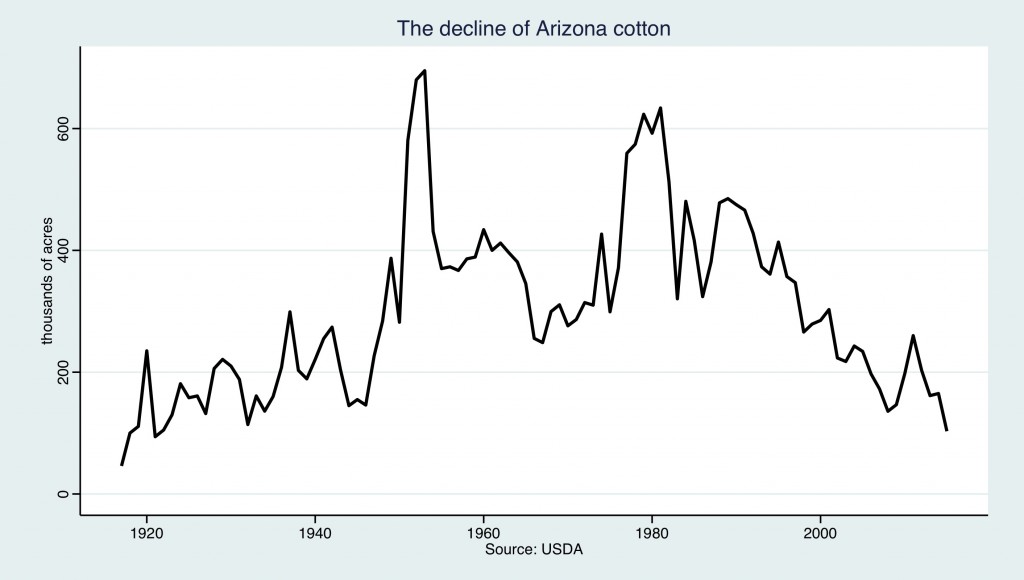Arizona cotton acreage this year is the lowest it has been in nearly a century.
Cotton is incredibly important in the evolution of western water policy, in Arizona in particular and therefore in the Colorado River Basin in general. In Arizona, it was one of the “Three C’s” that dominated the state’s economy – cattle, copper, and cotton. The need for water to irrigate a cotton empire was foremost in the minds of state leaders when they asked the U.S. Supreme Court to intervene in Arizona’s dispute with California over Colorado River water. State leaders grasped earlier than most that their aquifers couldn’t sustain the 1950s-era groundwater pumping that was fueling the cotton boom.
In 1953, there was 695,000 acres of irrigated cotton in Arizona. In data released today by the USDA, that was down to 101,000 acres:

Arizona cotton
That is the lowest Arizona cotton acreage since 1921, according to the USDA. There are a lot of factors at play here. Water is just one of them. But Arizonans are using less of their scarce water growing cotton than they used to.

While reading the BOR’s “Moving Forward 2015” report, it became clear that Arizona has done much to learn about water conservation and put that knowledge to use. Wish our state, Utah, did as well.
Pingback: The decline in California's cotton acreage - jfleck at inkstain